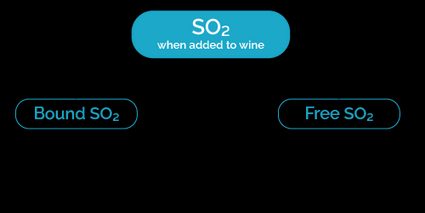SO2 Wine Calculator
If you're about to make your own wine at home, the SO2 wine calculator might be handy!
Read on to learn about calculating molecular SO2 in wine, the effects of sulfites in wine, and how you manage to add SO2 to wine.
Have you ever wondered whether sulfites are bad for your health? We've covered that, too!
Don't forget to check out as well:
Effects of sulfites in wine — why are sulfites added to wine?
Why would you even want to use a SO2 wine calculator? To count the right amount of sulfites to add to your wine, of course. But why add them at all?
Effects of sulfites in wine include:
- They inhibit the growth of bacteria (including acetic bacteria, guilty of the vinegar taste);
- They prevent the growth of wild yeast;
- They keep wine fresher;
- They keep the right color — prevents the wine from browning; and
- They allow the wine to last longer in storage.
Sulfites occur naturally in most wines. They're a product of yeast fermentation. However, yeast produces only a minimal amount of sulfites — that's why winemakers often add more, so they can act as preservatives in wine.
Calculating molecular SO2 in wine
When added to wine, SO2 (sulfur dioxide) can become a few things:

The molecular form of SO2 is the actual preserving, microbial-fighting agent. This is what adding SO2 to wine is about! You can't measure molecular SO2 directly, but you can count it if you know the pH and free SO2 content of your wine.
- The pH could be measured with pH meter or pH test strips;
- Free SO2 can be measured in a wine laboratory or at home, using, for example, test kits.
Once you've got your values, simply solve the equation:
where:
- — Molecular SO2,
- — Free (measured) SO2.
On the other hand, if you want to know how much free SO2 you need to achieve to get the desired molecular SO2, use the formula:
where:
- — Required free SO2,
- — Desired molecular SO2.
Remember you can always use our SO2 wine calculator instead. 😉
Using the SO2 wine calculator
Use the SO2 wine calculator to determine how much molecular SO2 (sulfur dioxide) there is in your homemade wine. The first rows of the calculator are all about calculating molecular SO2 in wine. The lower part counts where you should aim for while adding SO2 to wine. Now follow the steps:
-
Fill in the calculator with the current Free SO2 level.
-
Enter the wine pH.
-
You'll see the current content of the molecular count SO2 immediately.
-
The molecular SO2 level is the actual working agent in our homemade wine. That's why its level is so important. Fill in the row of Desired molecular SO2 — those levels depend on the kind of wine you're making. Hover over that row to see the help text on this.
-
After typing in the desired molecular SO2, you'll immediately see what level of Free SO2 you should aim for.
Are sulfites bad for your health?
So you might have been repelled by those 'Contains sulfites' labels on the wine bottles. But should you be concerned?
First, we must look at the difference between sulfites and sulfates. They are not the same! Sulfites are food preservatives, and you will find them in many food products, not only wines. Adding SO2 (sulfur dioxide) to wine will prevent it from spoiling. Sulfates, on the other hand, are strong detergents and used as cleaning agents. Do you recall SLS (sodium lauryl sulfate) from your shampoo? It is an example of sulfate as well.
Regarding health issues, sulfites are generally safe to eat, while sulfates are certainly not. However, certain people might be affected even by a small amount of edible sulfites. Usually, it's the case of persons with asthma, allergies, or a history of anaphylaxis reaction.
Summing up: If you're not sensitive to sulfites, they are relatively safe for your health.
FAQs
How do I add SO2 to wine?
To add sulfur dioxide (SO2) to wine, you can:
- Add sodium metabisulphite powder;
- Add Campden tablets (it is actually the same as sodium metabisulphite);
- Use potassium metabisulphite tablets or powder — most common method; or
- Theoretically, you can also inject SO2 as a pure gas into your wine. This method is mostly used by commercial wineries.
How much molecular SO2 is in a wine with a free SO2 of 24 mg/L, and a pH of 3.6?
The content of molecular SO2 in this wine is 0.383 mg/L.
To count this on your own:
-
Measure the content of molecular SO2 in your wine.
-
Measure the pH.
-
Solve the equation:
molecular SO2 = free (measured) SO2/(1+10^(ph-1.81)) -
The answer is 0.383 mg/L.
How much molecular SO2 should be in my wine?
The recommended level of molecular SO2 is:
- 0.5 mg/L (ppm) for red wines;
- 0.8 mg/L (ppm) for white wines; and
- Up to 1.5 mg/L (ppm) for dessert wines.
ppm — parts per million
Do all wines have sulfites?
Most wines contain sulfites, but you still can find wines without them. Yeast produces sulfites during the process of wine fermentation. Sometimes, winemakers add more sulfites (or sulfur dioxide — SO2) to the beverage. In the right amount, they act as preservatives in wine.